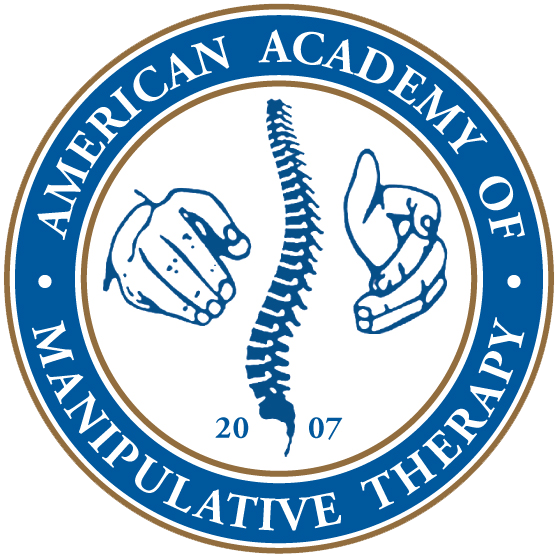Acupoints Versus Myofascial Trigger Points: a Rose by Any Other Name Would Smell as Sweet
The practice of dry needling by physical therapists carries its fair share of controversy among oriental medicine practitioners. Furthermore, in several U.S. states, acupuncturists and even some medical associations (i.e. MDs) and State Boards have sought attorney general opinions or legally challenged the practice of dry needling by physical therapists. While the insertion of needles without injectate is common among physical therapists and traditional Chinese acupuncturists, the theoretical construct guiding the evaluation, diagnosis and treatment dramatically differs between professions.
Acupuncture was first developed over 4000 years ago.1 While an original set of 349 acupoints was established between 259 and 282 AD, additional points were implemented during the 16th century. Moreover, the Chinese introduced new points as recently as 1949.2 Although trigger points were first described as “nodular tumors and thickenings” by Balfour3 in 1816, muscular calluses by Froriep4 in 1843 and fibrosis by Gowers5 in 1904, Steindler6 is wildly recognized as coining the term trigger point in 1940. Nevertheless, Lewit7, a physiatrist from Czechoslovakia, published the first article on dry needling in 1979, noting that the needle insertion itself rather than the injectate appeared to be the cause of the analgesic response. Notably, Dr. Janet Travell and Dr. David Simons added the word “myofascial” to trigger point and published the seminal text Myofascial Pain and Dysfunction: The Trigger Point Manual in 1983.8 Thus, it can be argued that while acupuncturists primarily developed acupoints, the myofascial trigger point concept originates from Western medicine.
In 2007, a literature review by Tough et al9 concluded, “there is a lack of robust empirical evidence validating the clinical diagnostic criteria for trigger point identification and diagnosis.” In addition, Myburgh et al10 found poor inter-tester reliability for determining the actual location of trigger points; furthermore, Lucas et al11 identified just 1 study that reported agreement between examiners on tenderness within the muscle but not the location of the trigger point itself. Additionally, Sciotti et al13 reported just 21% for inter-examiner agreement and an average error rate of 3.3 cm to 6.6 cm for identifying the actual location of the trigger point within the muscle. Moreover, the gluteus medius and quadratus lumborum were the only muscles that had pain referral patterns that were moderately reproducible10 and according to Hong et al (1997), only 39% of active myofascial trigger points produced localized twitch responses when needled.14 Thus, of the four traditionally used criteria for the diagnosis of trigger points, the local twitch response and predictable or classical myofascial pain referral patterns should be discarded.
To date, traditional Chinese acupuncturists have documented 747 acupoints and Western medical physicians have illustrated 255 myofascial trigger points throughout the body.15 Notably, Melzack et al16 published the first known direct comparison of acupoints and trigger points. In 1977, Melzack et al16 compared the 48 known trigger points to acupoints for pain, giving a 100% anatomic correspondence and a 71% clinical correlation to pain patterns. While 48 trigger points is certainly less than the 255 myofascial trigger points documented by Travell and Simons,8 Dorsher et al17-19 provided a more comprehensive comparison of trigger points and acupoints, reporting 92% agreement for location and 79.5% agreement for pain referral patterns. Moreover, another recent study reported a 70% correlation between trigger points and classical acupoints .15
Following a 3-part analysis for the anatomical location, pain location and referred pain patterns of acupoints and trigger points, and using graphic software, Dorsher17 superimposed 255 of the most common MTrPs from the Travell and Simons Trigger Point Manual8 with 361 classical acupoints. Dorsher concluded that 238 of the classical acupoints matched with the 255 MTrPs, with 89, 107 and 32 acupoints falling within 1, 2 and 3 cm of MTrPs, respectively.17 Dorsher then took the 238 corresponding anatomical points and cross-referenced their indications for pain with the Travell and Simons’ Trigger Point Manual8 and classical acupuncture texts. Dorsher found 221 of 238 points (93%) had MTrPs pain indicators, 208 of 221 points (94%) had similar regional pain indicators and 180 of 238 points (81%) had complete or near complete pain referral patterns.18,19
There is a clear distinction between the Western scientific principles that underpin the use of dry needling by physical therapists for the diagnosis and treatment of neuromusculoskeletal conditions and the outdated, traditional Chinese medicine framework that governs the use of needles without injectate by acupuncturists for the diagnosis and treatment of diseases of all 10 organ systems. Given that there is presently no valid or reliable way of locating trigger points with greater than 3.3 cm to 6.6 cm of accuracy, perhaps physical therapists should redefine what the target tissue should be when using dry needling for the treatment of pain and disability.20
The considerable overlap between the location, pain pattern and referred pain pattern of MTrPs and acupoints suggests that acupuncture (literally translating to “needle penetration”) and dry needling may be similar technical procedures but possess different theoretical and scientific underpinnings. Notably, the 140-page dry needling resource paper published in 2012 by the American Physical Therapy Association included just 6 references, with the use of the term acupuncture (in the absence of dry needling) in the title of 5 of those 6. Moreover, as Dunning et al20 reminds us, “physical therapy researchers do not ignore or exclude studies published by MDs, DOs and DCs when citing references to support the use of spinal manipulation treatments for a variety of neuromusculoskeletal conditions simply because the author considers the techniques as chiropractic or osteopathic manipulation.”20
The phrase “a rose by any other name would smell as sweet” is a frequently referenced part of William Shakespeare’s play Romeo and Juliet, in which Juliet argues that it does not matter that Romeo is from her rival’s house of Montague—i.e. that he is named “Montague.” The reference is often used to imply that the names of things do not affect what they really are. Nevertheless, although considerable overlap exists between the act of inserting needles without injectate into acupoints and myofascial trigger points, when a chiropractor performs McKenzie exercises, it doesn’t make him a physical therapist; likewise, when a physical therapist uses dry needling, it doesn’t make him an acupuncturist.
AUTHOR:
Noah Kubissa, DPT, OCS, Cert. DN
Fellow-in-Training, AAMT Fellowship in Orthopaedic Manual Physical Therapy
Board Certified in Orthopaedic Physical Therapy & Certified in Dry Needling
Physical Therapist, Concentra Medical Centers, Dallas, TX
REFERENCES:
- Eckman P. In the Footsteps of the Yellow Emperor: Tracing the History of Traditional Acupuncture. San Francisco, CA: Cypress Book; 1996.
- O’Connor J, Bensky D, eds. Acupuncture: A Comprehensive Text,Shanghai College of Traditional Medicine. Chicago, IL: Eastland Press; 1981.
- Stockman R. The causes, pathology, and treatment of chronic rheumatism. Edinburgh Med J 1904;15:107-116.
- Froriep R. Ein beitrag zur pathologie und therapie des rheumatismus. Weimar; 1843.
- Steindler A. The interpretation of sciatic radiation and the syndrome of low-back pain. J Bone Joint Surg Am. 1940;22:28-34.
- Gowers WR. Lumbago: its lessons and analogues. Br Med J 1904;16:117-21.
- Lewit, Karel. “The Needle Effect in the Relief of Myofascial Pain.” Pain 6.1 (1979): 83-90.
- Travell JG, Simons DG. Myofascial Pain and Dysfunction: The Trigger Point Manual. Vol 1. Baltimore, MD: Williams & Wilkins; 1983.
- Tough, Elizabeth A., Adrian R. White, Suzanne Richards, and John Campbell. “Variability of Criteria Used to Diagnose Myofascial Trigger Point Pain Syndrome??? Evidence From a Review of the Literature.” The Clinical Journal of Pain 23.3 (2007): 278-86.
- Myburgh, Corrie et al. A Systematic, Critical Review of Manual Palpation for Identifying Myofascial Trigger Points: Evidence and Clinical Significance. Archives of Physical Medicine and Rehabilitation, Volume 89 , Issue 6 , 1169 – 1176
- Lucas, Nicholas, Petra Macaskill, Les Irwig, Robert Moran, and Nikolai Bogduk. “Reliability of Physical Examination for Diagnosis of Myofascial Trigger Points.” The Clinical Journal of Pain 25.1 (2009): 80-89.
- Lew PC, Lewis J, Story I. Inter-therapist reliability in locating latent myofascial trigger points using palpation. Man Ther. May 1997;2(2):87-90.
- Sciotti VM, Mittak VL, DiMarco L, et al. Clinical precision of myofascial trigger point location in the trapezius muscle. Pain. Sep 2001;93(3):259-266.
- Gerwin RD, Shannon S, Hong CZ, Hubbard D, Gevirtz R. Interrater reliability in myofascial trigger point examination. Pain. Jan 1997;69(1-2):65-73.
- Peter T. Dorsher. The Journal of Alternative and Complementary Medicine. May 2008, 14(4): 353-359. doi:10.1089/acm.2007.0810.
- Melzack R, Stillwell DM, Fox EJ. Trigger points and acupuncture points for pain: correlations and implications. Pain. 1977;3:3-23.
- Deutsche Zeitschrift für Akupunktur 11/2007; 51(3):15–24. DOI: 10.1016/j.dza.2008.07.004
- Deutsche Zeitschrift für Akupunktur 01/2008; 51(4):6-11.
- Deutsche Zeitschrift für Akupunktur 01/2009; 52(1):9-14.
- Dunning J, Butts R, Mourad F, Young I, Flannagan S, Perreault T. Dry needling: a literature review with implications for clinical practice guidelines. Physical Therapy Reviews, 19(4):252-265.




